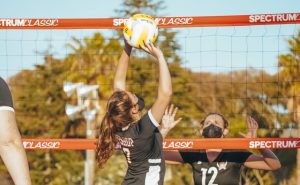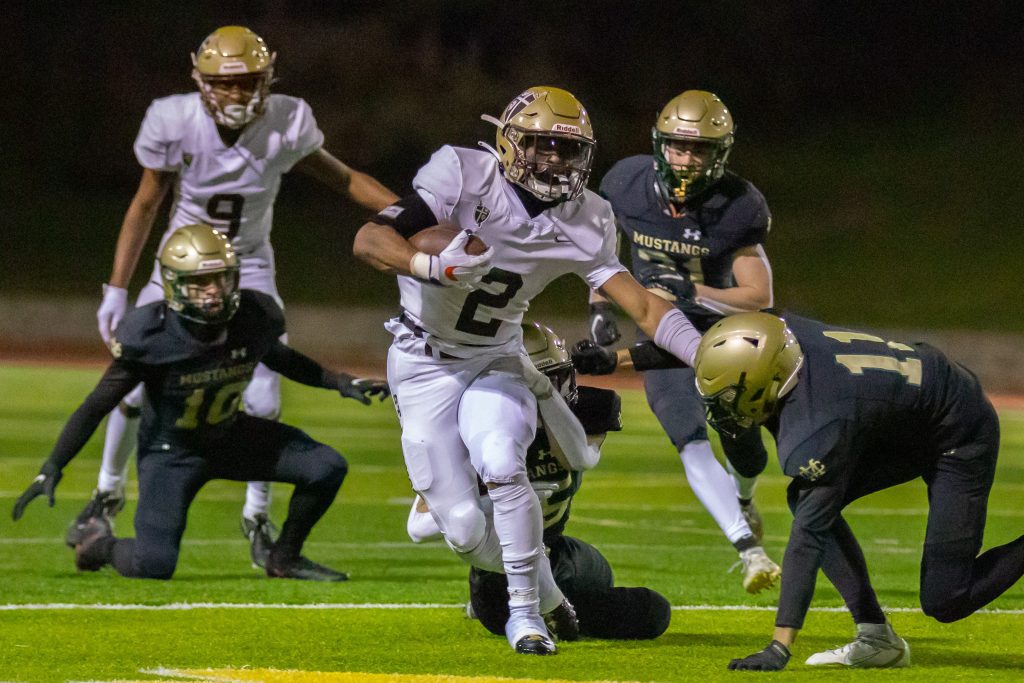Louisville High School’s girls’ water polo season started and ended last Saturday, March 20. That’s right: one match, season over.
But it was still one more than the “Royals of Woodland Hills” thought they were going to play not so long ago, when the COVID-19-related shutdown of high school sports was in full effect. And all things considered, one match meant victory, regardless of what the scoreboard may have said (they defeated Marymount 13-3).
“Our students are just happy to be back playing,” said Marilyn Hyman, athletic director at Louisville, where 65% of the student body population of 360 compete in athletics. “Given all the constraints they’ve dealt with, it’s great for them to have some sense of normalcy again.”
No, they won’t be playing as many games, or have as many (if any) fans cheering them on. There may be no post-season playoffs, depending on the sport. They may be required to wear masks, even during competition. They can’t shake their opponents’ hands before, during or after the competition.
But for hundreds of Catholic high school athletes in the Archdiocese of Los Angeles, cooped up at home for months because of the coronavirus pandemic, any kind of athletic season is better than none.
“With all the changes that have and still are taking place, the kids are just excited to be back out there,” said Matt Luderer, athletic director at St. Francis High School in La Cañada. ”And their attitudes have been great, as we’ve tried to figure out how they can salvage their seasons.”
Certainly, not very much about this very condensed spring sports season is normal. Sports that normally take place in the fall and winter are taking place in the spring (notably football, which began March 12).
Louisville’s tennis and cross-country teams — normally “fall season” sports — began competition early in March, quickly followed by softball, golf, track and field, swimming, soccer and “hopefully lacrosse and hopefully basketball,” said Hyman.
Some schools with lower enrollments and a scarcity of available practice and game facilities have dropped freshman and junior varsity sports.
“With an enrollment of only 275, having upwards of 16 sports definitely presents its challenges, simply because we may not have enough student-athletes to field a team,” said Aaron Skinner, athletic director at Bishop Diego High School in Santa Barbara. “So sports that would normally have two levels of play are being condensed to one.”
Schools are also challenged to find venues for practice and games, especially if they rely on community venues (like swimming pools, golf courses and tennis courts) to accommodate their needs.
“Our football, soccer, and lacrosse teams share one field,” said St. Francis’ Luderer. “Our volleyball and basketball teams share one gym. And we’re a boys’ school; imagine what coed schools have to deal with.”

Complicating matters further for the past year are constantly changing health and safety guidelines issued by the California Interscholastic Federation, based on directives from the Centers for Disease Control and local, county, and state health departments.
Los Angeles, Ventura and Santa Barbara Counties have all moved into the less restrictive “red tier” level earlier this month as COVID-19 rates continue to slide. That allows for more “reopening” opportunities, like athletic competition, but the interpretation of the rules governing their reopening has varied, athletic directors said.
For example:
— Mask or no mask? If so, for which sports? During competition or not?
— Fans or no fans? If so, which fans (family or students) can attend, how many, in what circumstances, and at which venues?
The difference can lead to confusion and frustration, says Luderer, who has seen policies vary from league to league, depending on how guidelines are interpreted.
“Some schools say it’s OK for some fans to attend,” he noted. “But our primary goal is for students to get back to in-person learning, and we don’t want to jeopardize that by putting anyone at risk. So out of concern for everyone’s health, and even though a lot of family and alumni and boosters want to see our kids play, we’re not allowing fans at the moment — but that could change very quickly.”
Some schools, like Cathedral High School near downtown Los Angeles, allow just two family members from the same household to attend, socially distanced, depending on sport and venue.
“The key is following protocols and working together with other schools,” said John Ferrante, Cathedral athletic director. “Ultimately, it’s all about the students and keeping them safe so they can not only play but continue to attend class.”
“There is a strong desire among everyone to be back in a community setting like sporting events,” noted Skinner of Bishop Diego. “I know our families are excited to be able to watch their children play the sports they love again, and so far at the events that we've had, our families and opposing families have been great with the guidelines. They are obviously incentivized to follow the rules so that they can enjoy watching their children.”
Indeed, the whole road to returning to competition “has been crazy, like going from zero to a hundred in about a day,” said Luderer. “The only constant has been change. In recent months, we’ve sent out messages to our school families one day, and within a week the message is outdated because of what the CIF or the CDC are saying.”
Still, for student-athletes, any return to competition beats none at all. And their enthusiasm is rubbing off on the rest of the school community.
“The students were very appreciative when facilities opened up for conditioning and skill development,” said Louisville’s Hyman. “Some sports, in fact, had a huge jump in interest. And the faith-based culture of our school has a lot to do with how our coaches are able to address the challenges students face. They do more reflection on the mental and spiritual aspect of sports, something they normally incorporate into their practices, and it helps our student-athletes.”
The spiritual component helps off the athletic field as well, said Cathedral’s Ferrante, who also serves as dean of student services. “Our teachers have been really good with their lesson plans, and our students have done a phenomenal job, exceeding expectations,” he said. “So the academic part of school off the field has gone exceedingly well.”
Bishop Diego has been offering counseling and Zoom Bible studies to help students get through the challenges of studying. Skinner expects their efforts to yield results on the field.
“Our student-athletes have handled this experience very well, as well as you can expect 14- to 18-year-old kids to handle this,” he said. “That's not to say it’s been easy, and obviously it looks a lot different than in previous years. But there is a degree of normalcy, and we’re determined to follow the guidelines so we can return to the kind of spirited athletic environment we all enjoy.”

